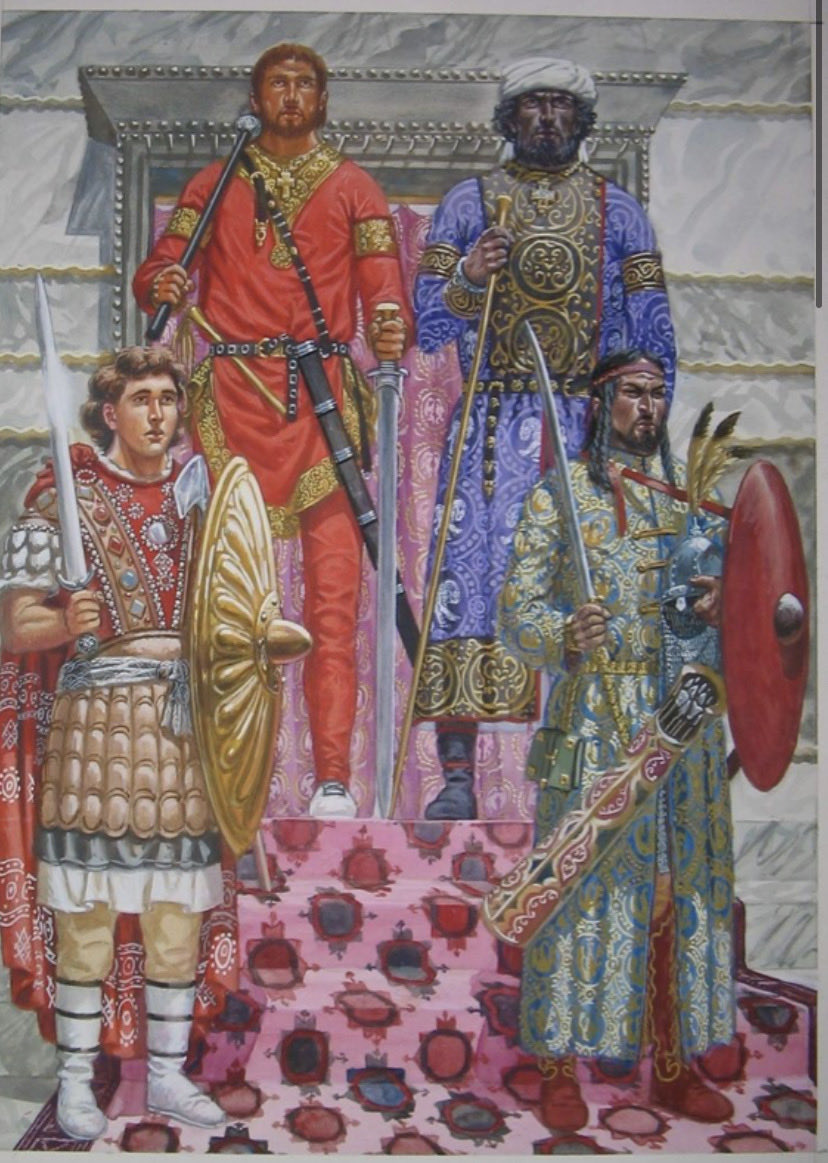Did you know Greek Paganism survived well into the Medieval period? Let’s explore the Mani Peninsula, where the last worshippers of Zeus, Ares, and Apollo clung to the rocky cliffs. 

The people of the peninsula lived in fortified villages and “house-towers,” most settlements were only accessible from the sea. 

The Maniots, claiming ancestry from the famed Spartans, lived as fierce warriors and pirates. The people of the isolated peninsula often engaged in blood feuds and stubbornly resisted any attempts at conquest from outsiders. 

Roman rule of the area was light and Mani flourished as a center of purple dye production, as Christianization of the Empire began in earnest in the 4th century AD, some churches were built in Mani, the ruins of which indicate a partial conversion of the Maniots. 

One of the most famous is the Monastery of Panayia Yiatrissa. The monastery was originally a temple to the goddess Athena. In 382 AD the priest of the temple, Vrasithas, travelled to Patras and was converted to Christianity. 

Vrasithas converted his fellow priests and transformed the temple into a church dedicated to “the birth of the Mother of God, the ever-Virgin Mary.” From this burgeoning church complex, the Christianization of Laconia began. 

However, these early conversions did not convert many of the stubborn inhabitants of the Mani Peninsula. Wary and isolated, Greek Paganism continued to thrive in the villages of the region while it dimmed in the rest of the Hellenistic world. 

The following centuries weakened Imperial authority as Arabs conquered and besieged the Empire from the East and Slavs settled the Balkans. This allowed paganism to survive unmolested as the Empire’s grip slackened. 

The Melingoi, a Slavic tribe, settled on the slopes of Mount Taygetos, just north of the Mani Peninsula. Also pagan, and cutting the Maniots off from their fellow, Christian Greeks, this further isolation of rocky Mani ensured the survival of their traditions. 

By the Macedonian Dynasty, Byzantine control and influence was returning to the far reaches of the Peloponnese. Constantine VII described the Maniots in his De Adminstrando Imperio, “Be it known that the inhabitants of Castle Maina are not from the race of aforesaid Slavs…” 

“…(Melingoi and Ezeritai dwelling on the Taygetus) but from the older Romaioi, who up to the present time are termed Hellenes by the local inhabitants on account of their being in olden times idolatres & worshippers of idols like the ancient Greeks, and who were baptized and…” 

became Christians in the reign of the glorious Basil. The place in which they live is waterless and inaccessible, but has olives from which they gain some consolation.” 

Although Constantine claims the Maniots were fully converted in the reign of Basil I (r.867-886), evidence points to a slower Christianization and later date for the fully acceptance of Christianity. 

In the late 10th century, many Maniots still worshipped the old gods. That would change with the arrival of a holy man and Saint, Nikon the “Metanoite (penitent).” 

Nikon had spent five years in Crete preaching to the Muslim & heterodox Christians who had developed a syncretic faith under the Muslim Emirate. Nikon’s biography described the Christian Cretans being corrupted “by time and long fellowship with the Saracens.” 

After finding success in Crete, Nikon travelled to Euboea & south to Sparta where he reportedly saved the population from a plague. Nikon stayed in Sparta for a time, helping construct three churches & a monastery. Nikon was a respected preacher & reportedly performed miracles. 

Later, Nikon travelled south to the Maniots, intent on converting them as he did the Muslim Cretans. Nikon spent years preaching to the Maniots & was instrumental in their final & complete conversion to Christianity. 

On November 26th, 998, after 30-odd years of preaching in the Peloponnese, Saint Nikon died. His piousness, asceticism, and masterful proselytization made a permanent impact on the people of Sparta & Mani. Nikon is the Patron Saint of the city of Sparta & the villages of Mani. 

Although the Maniots were now Christians, they remained a fiercely independent people. Maniots continued to pirate and feud, always refusing to be subdued by Frankish and, later, Ottoman rulers. Maniots were the first to declare war on the Ottoman Empire in the Greek Revolution. 

Mani is no longer a pirate haven, or wracked by blood feuds & wars. Narrow, snaking roads now tenuously connect the peninsula to the rest of the county and Mani is a tourist hotspot thanks to its picturesque villages and beautiful scenery. 

However, Maniots maintain their claims of Spartan lineage. They hold a stubborn pride in their loyalty to their traditions & faith, once to Zeus & now to Christ. The Maniots, like the Spartans, still say, “Η ΤΑΝ Η ΕΠΙ ΤΑΣ.” “With the shield or on the shield.” 

• • •
Missing some Tweet in this thread? You can try to
force a refresh





















